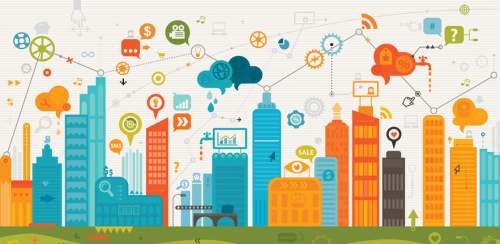When we talk about IoT, we often express concern over security and other risks associated with living in a connected world. Let’s put those conversations on pause today to discuss how we can leverage IoT for environmental sustainability. As a company committed to a sustainable future, SparkFun is looking forward to a future in which IoT empowers us to be more informed about our planet and how we're interacting with it.
Because IoT's sophisticated network of sensors and software are capable of collecting real-time data about environmental activity, we have the opportunity, as makers, to build devices that give us more information than ever before. If used effectively, IoT can play a key role in building a strong, stable and sustainable future. The conversation around IoT and sustainability is broad and encompasses everything from the civic to individual scale. It’s far too large a subject to cover in one post, so for today let’s talk about how makers can help conserve water at home.
Our water system is currently under major distress. Every year we lose approximately 2.1 trillion gallons of clean, treated water to leaks and other infrastructure issues. With notable population growth, major climate challenges like the drought in California and water quality issues like the Flint Water Crisis, it’s becoming apparent that we need to find better ways to capture and conserve fresh water.
On the individual scale, you can build your own IoT project for water sustainability using our very own Soil Moisture Sensor. One of the biggest ways in which we mismanage water usage is through over-watering plants and agriculture. The soil sensor features two large exposed pads that function as probes, acting together as a variable resistor. More water in the soil means better conductivity, and therefore lower resistance. Hook one of these guys up to a WiFi-enabled microcontroller and never wonder when you need to water your plant again. Take it one step further and add a notification element - like email, text or Twitter - so that your plants can alert you when they need to be watered! This small implementation of IoT will help you save on water and keep your plants alive and well.
Here at SparkFun we take environmental sustainability very seriously and we hope you do too! On top of rigorous recycling and waste management systems, we strive to reduce our energy consumption by farming solar energy on our roof. We also have embedded our building with a network of sensors so we can track, monitor and minimize our communal carbon footprint. Keep tuning into the blog to learn more about how SparkFun is working towards a more sustainable future.
How would you leverage IoT to enable environmental sustainability? What are your favorite IoT products that work towards a more sustainable future? Let us know in the comments below!
*Information for this post was sourced from IOT & SUSTAINABILITY: PRACTICE, POLICY AND PROMISE a white paper written by Brandie Nonnecke, Ph.D. Mia Bruch, Ph.D. and Camille Crittenden, Ph.D. and sponsored by Microsoft and Citris.








What about capacitive sensing? Then the electrodes could be covered in a protective layer.
I built a battery-powered soil sensor using a UNO, soil sensor, and 9V battery connector. As shared by others, the soil sensor can't be left in soil for very long. A servo-actuated mechanism to lower the sensor periodically would be useful. I noticed that the soil has to be quite dry to lower the output considerably and it may be too dry for plants even though it feels moist to the touch. I'll have to play around with fine-tuning thresholds. Could be a good science fair project for students.
Great tip! Thanks for sharing!